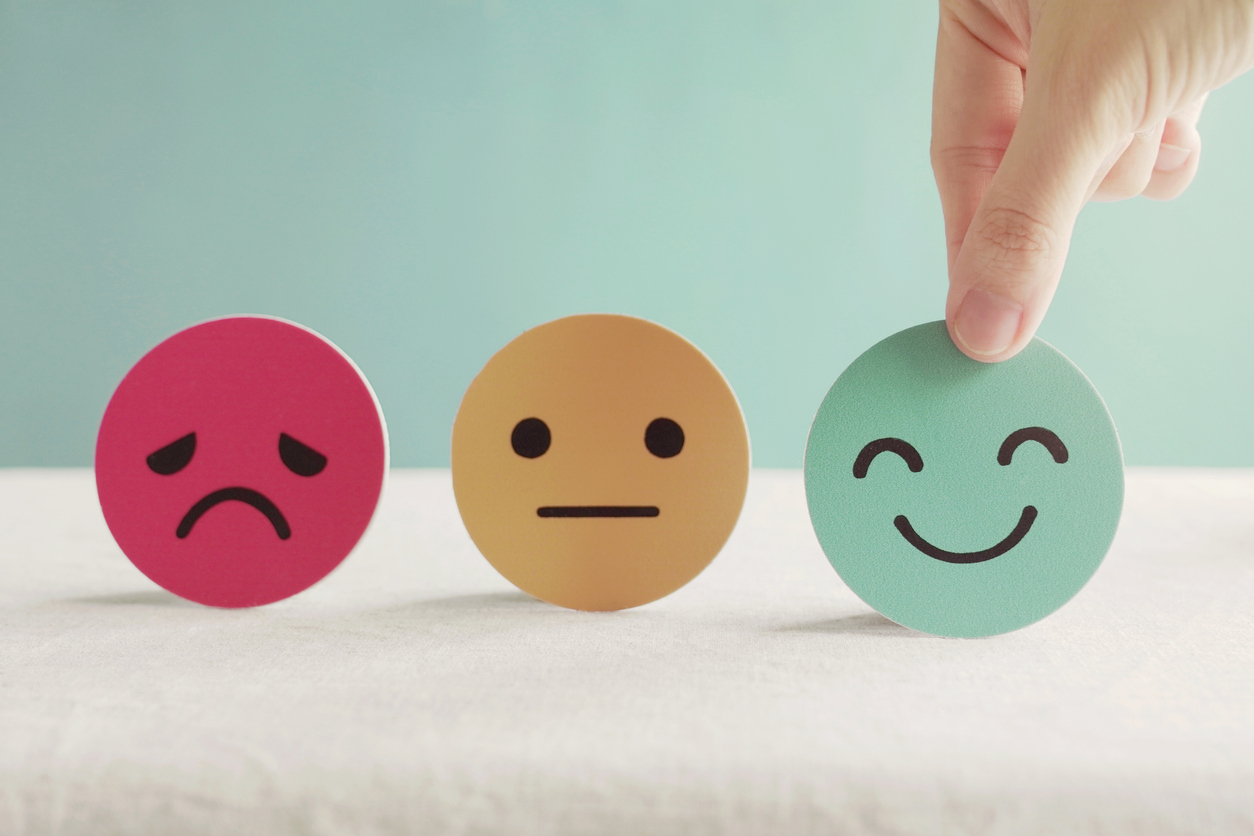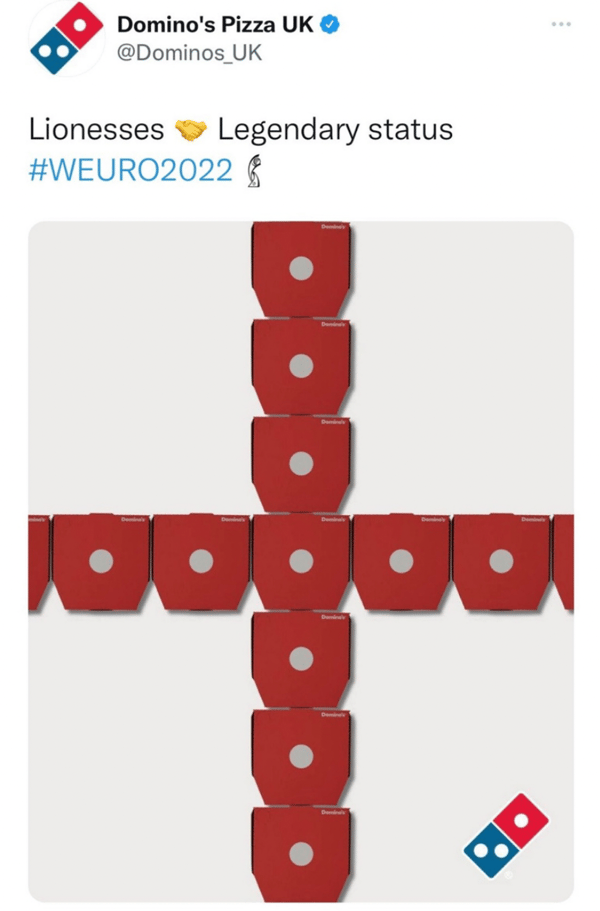
Businesses are constantly looking for new ways to connect with their target audience, especially when we are talking about B2C companies.
Social media campaigns, influencer marketing strategies, and strong brand identity are all ways eCommerce businesses try to get on their audience’s radar and stay there for good. Or at least until they persuade people to buy their product or service.
And even though we know that not all B2C purchasing decisions are emotional, a significant portion of them still are.Part of your marketing efforts will focus on showing everything you can offer. Then the rest is spent on demonstrating that you have the right solution for your customer base, better than anything else on the market.
And emotions are a big part of that.
So, how can an eCommerce business leverage emotional marketing strategies without falling into the deep hole of failure and meme culture?
I'm here to show you!
What are emotional marketing and advertising?
Emotional marketing involves efforts focused on eliciting an emotional response in the target audience, eventually resulting in a purchase. I'm talking about fear, sadness, empathy, anger, and anything else you can think of.
Any emotion that will make people react strongly to your advertising and immediately take action, such as sharing a piece of content or even purchasing right away, can be evoked through emotional marketing. This tactic can be applied to both offline and digital marketing.
Think about all of the holiday ads we see every year. Almost all of them depend on creating a feeling of warmth, nostalgia, empathy, and togetherness, only mentioning the product at the end of the ad. It makes people remember their childhood, think of their loved ones, and get in the mood to buy holiday-themed products.
Another example would be cause marketing, which typically includes programs launched by businesses to bring awareness and funds to a particular organization. Supporting a non-profit can drive sales and boost customer loyalty — all while making a difference.
So what are the different ways marketing agencies do this?
Let's take a look.
The 2 Main Types of Emotional Marketing Strategies
1. Emotional Advertising
Emotional advertising involves brands creating a marketing campaign centered around an event, target demographic, or societal problem that needs to be resolved.
The winter holiday campaigns I mentioned earlier are an example of that. Holiday-based marketing can be used to raise awareness, build customer loyalty, and set your business apart from other companies that are not tackling the issue as effectively.
2. Emotional Branding
Emotional branding is when a company's marketing strategy has always been and will always be based on creating emotional responses in their audience, often centered around a specific cause or a demographic.
A perfect example is Always, a company that sells feminine hygiene products. Its marketing campaigns always focus on women's power and how they shouldn't limit themselves and instead always follow their dreams.
Nike, on the other hand, through its infamous motto "Just Do It," is trying to motivate people, no matter their origins, background, gender, or capabilities. Don't think about it; just do it.
Benefits of Marketing that Depends on Emotional Connections
B2B transactions are almost always based on revenue and how it will benefit the company, shareholders, and employees. They don't need to connect emotionally because, typically, none of that matters in the business world.
In B2C, however, including eCommerce, emotional responses are crucial for establishing a positive relationship between the brand and the customer. If there is an emotional connection, people are more likely to remember your business, recommend it to their friends and family, and, most importantly, come back.
Unlike transactional marketing, emotional eCommerce marketing focuses on creating a long-term relationship with its customer base and not forgetting about them after the purchase is complete.
Another reason to create emotional content is that it will set you apart from all your competitors. If you think about it, all successful big brands use some sort of emotional branding or advertising.
There are many carbonated beverages with expansive marketing campaigns, but nothing compares with Coca-Cola's ads about family and being together. They are successful not because Coca-Cola has such a unique taste but because they are experts in connecting with their customers on a much deeper level than all the other brands.
And last but not least, many of those ads are connected to raising awareness of an important issue, which means that your brand can have a greater purpose than just selling to people. Corporate responsibility is important, no matter how big or small your business or audience is.
Emotional Marketing vs. Emotional Manipulation
So far, I've talked a lot about the benefits and unique qualities of emotional marketing. However, there is something essential that needs to be mentioned.
To many people, profiting from people's emotions can be considered pure manipulation. And in a way, they are not entirely wrong. According to Wikipedia, "Manipulation (psychology) is behavior designed to exploit, control, or otherwise influence others to one’s advantage."
And the end goal for eCommerce businesses is to make their customers purchase their product or service.
However, just as with any type of marketing, there is a right and a wrong way to do it. Here is a list of things that can turn your marketing strategy into harmful manipulation:
- Your product is not as advertised. It's faulty, doesn't fulfill its purpose, or can be dangerous to people and the environment.
- You're actively profiting from a culture without contributing to its prosperity or acknowledging its struggles.
- You're falsely supporting marginalized groups and using performative marketing campaigns only to reach your goals, forgetting everything about them afterward, or actively supporting harmful rhetoric.
- You're actively lying about donating to charities and supporting important causes, e.g., the endless number of companies that talk about being eco-friendly and carbon neutral while still actively harming the environment.
Simply put, if you have bad intentions and are putting false emotions in your campaign, people will know, and it will only harm your business in the long run. Don't promise things you cannot fulfill; always work with certified experts to avoid unfortunate situations.
Creating an Emotional Marketing Strategy in 6 Steps
Since emotional marketing can be quite stirring and risky, using a professional is widely recommended if you have no experience.
1. Define your end goals.
Defining your end goals is easily the most critical part of the process and will influence all your other decisions.
- Are you trying to improve customer retention?
- Do you want to promote a new product?
- Is this a campaign that you want to do regularly?
- Are you trying to raise awareness of a particular issue?
If you're starting your campaign to improve brand awareness or turn your audience's attention towards an important issue, such as global warming, you shouldn't expect a lot of ROI.
On the other hand, if you're looking to promote a new product, you need to make the extra effort and ensure that all the money you spend will go towards conversions.
2. Research your audience thoroughly.
You can lose loyal customers in a second if your campaign sends the wrong message — whether intentional or not. When you think about the pain points you want to tackle, make sure your decision is based on heavy research and not outdated knowledge or guesses.
For example, sports companies love to use famous athletes to promote their products. But they have to be very careful. It will be very harmful to use a controversial figure that doesn't have a good reputation, no matter how good of an athlete they are.
Researching your customers is crucial for every other aspect of the marketing campaign. For example, it will help you choose the best platform — you could create a social media campaign, a billboard, a TV ad, or a newsletter.
If it's a localized ad, you can choose a topic that will have a more significant emotional impact on that demographic. Local campaigns are also usually very successful. An excellent example is this reactive marketing from Domino’s after the Lionesses' incredible victory at Wembley in August.

Source: Domino’s Pizza UK
This event was highly emotional for many people in the UK, so brands immediately started producing content such as billboards and ad campaigns based on that, catching that sense of pride and making people come together.
3. Think about the type of emotional response you want to create.
You need to ask yourself several important questions when you start brainstorming your campaign.
- What kind of emotions are you able to create?
- How will these specific emotions lead people to a purchasing decision?
- Is this campaign something that you can leverage in the future?
The emotions you choose will affect the entire tone of your campaign, the colors you choose, and the words you include. They will be the backbone on which you will base many of your decisions.
4. Consult with niche experts to make sure everything is done right.
The last thing you want as a result of your marketing campaign is for you to disrespect your target demographic instead of connecting with them. If you’re talking about environmental change, contact an expert scientist or certified professional to help you review the facts and present your case correctly.
The same rule applies to every campaign that tries to tackle an important issue, be it racism, homophobia, misogyny, climate change, native lands, etc. Hire people that represent that audience, and don’t try to guess whether something will work. Be on the safe side.
5. Test your campaign on a smaller audience before launch.
Have you ever looked at an ad and asked yourself, “Did no one look at this before putting it on TV?”
This is what you’re trying to avoid.
For example, if you’re creating an ad targeting women and women’s issues, gather all of your female colleagues, family, and friends, and ask them what they think. You would be surprised how many things can be missed, especially if you have been working on the campaign for a long time.
6. Decide which medium will fit your needs.
Even though I am listing all of these steps in a specific order, the truth is that this last one doesn’t really have a place. It could be the first thing you think about, or it could be the last.
It all depends on your priorities. If you want to increase brand awareness on a national level but don’t have the budget for a TV ad, you can try out YouTube or Facebook.
If you want the message to reach a young audience, then a social media marketing campaign would be the best choice, Facebook excluded.
Simply put, you need to think of everything at once when you start wondering which is the best channel for this particular campaign. Here are the main factors that will help you choose:
- The age, location, and interests of your target demographic
- The overall budget for the campaign
- The amount of time you have available
- Whether you have an entire team or just a one-person-department
- The end goal of your marketing campaign
- The format of your message (video format, an email newsletter, a billboard, a series of pictures on social media, etc.)
Because each channel has a specific set of requirements, know that you won’t be able to change it halfway through. Once you choose a medium, stick with it.
Emotional Marketing: The Good, The Bad, and The Ugly
Examples make everything more digestible, so I gathered a few we can all learn from.
Good Emotional Marketing Examples
1. Gymshark - “Look good. Lift ugly.”

Source: Adweek
Gymshark's latest ad campaign targets a critical issue: the unrealistic standards set by most of the fitness industry, especially the need to look flawless no matter what you are doing.
These unattainable standards are the reason why so many people are afraid to go to the gym in the first place. So, as a brand that sells sportswear, Gymshark made this excellent billboard campaign to promote its products while breaking down stereotypes of what people should look like in the gym.
2. Chevy - “Maddie”
Overall, video ads can elicit emotions a lot easier than any other format, but that doesn’t mean that it’s not difficult to do so. There still needs to be a strong connection with the target audience.
This ad by Chevy is an excellent example of an ad that can make even the most cold-hearted person ugly cry in a corner. It shows how a dog named Maddie has been an essential part of this girl’s life from a very early age. She’s always been there, protecting her, helping her become stronger when no one else is around.
Car companies love to use the narrative that a vehicle is a part of the family, and this commercial is no exception.
Even though the car is never explicitly mentioned, it’s evident that they are saying the dog is another essential part of the evolution and life of this family.
You can use this narrative in many household-related products and services. Are you selling kitchenware? Then you can make an ad that shows people cooking together through the years, always using the same pot.
3. Stabilo Boss - “Highlight the Remarkable”

Source: D&AD
This is a campaign by Stabilo Boss that highlights three women with incredible achievements that have stayed hidden for the larger part of history — NASA mathematician Katherine Johnson, US First Lady Edith Wilson, and Austrian-Swedish physicist Lise Meitner.
This is also a great example of educational content alongside the emotional one. It made customers feel anger and confusion towards history books and the culture that tried to hide the achievements of these great women. It also showed another part of the brand's identity — one that cares about the true history, appreciates its female colleagues, and wants to educate people.
Bad Examples of Emotional Marketing
In this section, I want to showcase the examples you shouldn’t emulate. They were all done with good intentions, but probably none of those marketing teams had asked for a second opinion. Otherwise, they would have known how inappropriate their ad was.
1. East Hill’s Shopping Center - Back to School
This ad became a cult classic through the years for all the wrong reasons. This shopping center decided to jump in on the Back-To-School season with a brand new ad that shows their best shops.
It quickly became viral, but people listed it as the worst ad ever, making fun of the song and creating even more memes out of it.
However, this example represents something vital.
Bad ad campaigns that are harmless, don’t express prejudice, and don’t target a specific community, can still have good results even if the reactions aren’t what was intended.
Yes, they become the butt of the joke and people make fun of them for years, but often they still manage to increase engagement nonetheless.
So even if you try a risky marketing campaign and it gets turned into a meme, use it to your advantage. Join the laughter and connect with your audience on a much deeper level.
2. Mister Clean - Mother’s Day

Source: Penn State
On the other hand, this is a great example of a bad emotional marketing campaign that was seen as offensive. Above is a campaign Mr. Clean did for Mother’s Day. Naturally, upon seeing this ad, many women were upset at its messaging.
Although their intention may not have been to be offensive, all that matters is the effect the ad had on their audience. Many felt that this ad implied that women’s job is to clean up and to teach their daughters the same.
This is why it’s so important to test your campaigns with a smaller pool of your target audience. Looking at this ad, it looks like no women were involved in the creation of this marketing campaign. Otherwise, they would have seen how bad it looks.
Conclusion
If you’re a sensible eCommerce business owner, there are many ways to leverage emotional marketing and emotional branding. However, you can’t afford to forget that we are talking about communication with other people — and you can’t afford to be insensitive towards your target audience.
On a brighter note, emotional marketing is a great way to connect with your audience and show them what you stand for and how your product can improve their lives.
Just remember to be creative, sensible, and kind. Everything else will work out.





Leave a reply or comment below